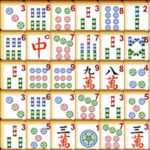In a gaming landscape filled with survival and sandbox titles, few indie games have generated as much organic excitement as Core Keeper. Developed by Pugstorm and published by Fireshine Games, this pixel-art adventure blends elements of survival, crafting, exploration, and action RPG into a charming and surprisingly deep underground experience.
Released in early access in 2022, Core Keeper struck a balance between the familiarity of titles like Terraria and Stardew Valley while carving out its own identity through co-op design, mysterious biomes, and a persistent sense of progression. The game's success has largely come from its responsive development, engaging mechanics, and sheer replayability.
This article explores the many layers of Core Keeper — from mining and combat to farming, building, and multiplayer exploration — all while analyzing its strengths, shortcomings, and long-term potential in the indie genre.
1. Setting the Scene: What Is Core Keeper?
Core Keeper is a top-down pixel-art sandbox survival game set in a mysterious underground world. Players awaken next to a dormant ancient Core and must explore their surroundings to gather resources, battle enemies, and uncover secrets of the subterranean realm.
There is no surface world. Everything in the game exists beneath the earth, giving it a unique identity among survival titles. As you mine and expand your territory, the Core gradually reactivates, opening paths to new biomes, bosses, and tech trees.
With support for single-player and online co-op up to 8 players, the game offers a flexible experience whether you're tackling it solo or collaborating with friends.
2. Mining and Exploration
The primary gameplay loop begins with mining. Players use pickaxes to dig through dirt, clay, stone, and tougher materials in search of ores, gems, and ancient relics. Light plays a critical role — the underground is completely dark until you place torches or lamps, creating tension and atmosphere.
As you explore, you discover procedurally generated biomes with distinct enemies, resources, and environments. From glowing fungus caves and haunted ruins to poisonous swamps and ancient temples, every new biome feels distinct and rewarding.
The game encourages curiosity. Secret rooms, rare loot, and hidden bosses await players who dig just a little deeper than the obvious path.
3. Combat and Enemy Design
Core Keeper features real-time combat with a variety of weapons including swords, slingshots, fire staffs, bombs, and more. Melee and ranged builds are both viable, and enemies have telegraphed attack patterns reminiscent of action RPGs.
Each biome contains unique enemy types and environmental hazards. Slimes bounce with unpredictable movement, fireflies can swarm in darkness, and bosses have complex mechanics that require strategy and timing to defeat.
The difficulty curve is fair, starting simple and escalating as you unlock tougher zones. Combat is satisfying and layered enough to remain engaging over time.
4. Crafting, Building, and Automation
Like most sandbox games, crafting is at the heart of Core Keeper. You'll gather materials to create workbenches, forges, cooking stations, armor sets, and machinery. Each new station expands your possibilities, from building railways to crafting magical runes.
The building system is surprisingly robust. Players can create aesthetic bases with decorative items or build functional farms and storage systems. Structures can be customized with floor tiles, walls, furniture, and lighting to suit both function and form.
In later stages, the game introduces automation. You can build drills, conveyor belts, and machines to mine and transport materials while you focus on exploring or fighting. This adds a deep layer of strategic planning and efficiency.
5. Farming and Cooking
Farming in Core Keeper is a full-fledged system. Players can plant and harvest a wide variety of crops that grow in specific soil and biome types. Different plants offer unique buffs and cooking options.
Cooking is more than just healing. Recipes grant temporary bonuses like increased movement speed, mining power, critical hit chance, or damage resistance. Finding the right food combo before a boss fight can make or break your success.
Farming becomes a relaxing, meditative loop between intense exploration runs, giving players a chance to regroup and prepare before diving back into danger.
6. Skill Trees and Character Progression
Character progression in Core Keeper is based on a skill system. The more you perform an action, the more experience you gain in that skill. These include mining, melee combat, running, fishing, crafting, and more.
Each skill tree offers perks that improve your abilities. For example, investing in running increases your speed, while upgrading your crafting skill reduces resource costs or speeds up crafting time.
This organic progression system rewards your preferred playstyle. If you love fishing or farming, your character will become a specialist in that area, giving the game strong role-playing elements.
7. Multiplayer Co-op and Community Interaction
Core Keeper truly shines in multiplayer. Up to eight players can collaborate on one world, pooling resources, building shared bases, or exploring different regions in parallel. Communication and teamwork enhance the experience and reduce grind.
Co-op play doesn’t force uniform progress — each player can explore at their own pace while contributing to shared goals. Boss fights are more dynamic with multiple players, as roles like tank, DPS, and support naturally form.
The game also benefits from a strong modding and content creator community. Players share base designs, custom challenges, and tips on Reddit, Discord, and YouTube, contributing to an active and supportive ecosystem.
8. Bosses and Endgame Content
Core Keeper features multiple major bosses that unlock access to new areas or activate parts of the central Core. These boss fights are multi-phase battles with environmental mechanics, summoning waves, and specific strategies.
Defeating bosses grants unique items, skill upgrades, and progress toward the endgame. Bosses like Glurch the Abominous Mass or Ivy the Poisonous Mass require preparation, gear upgrades, and sometimes cooperative play to defeat efficiently.
Endgame content continues to expand through updates, including harder zones, relic crafting, and seasonal events. The developers are committed to adding long-term challenges and story depth for dedicated players.





























